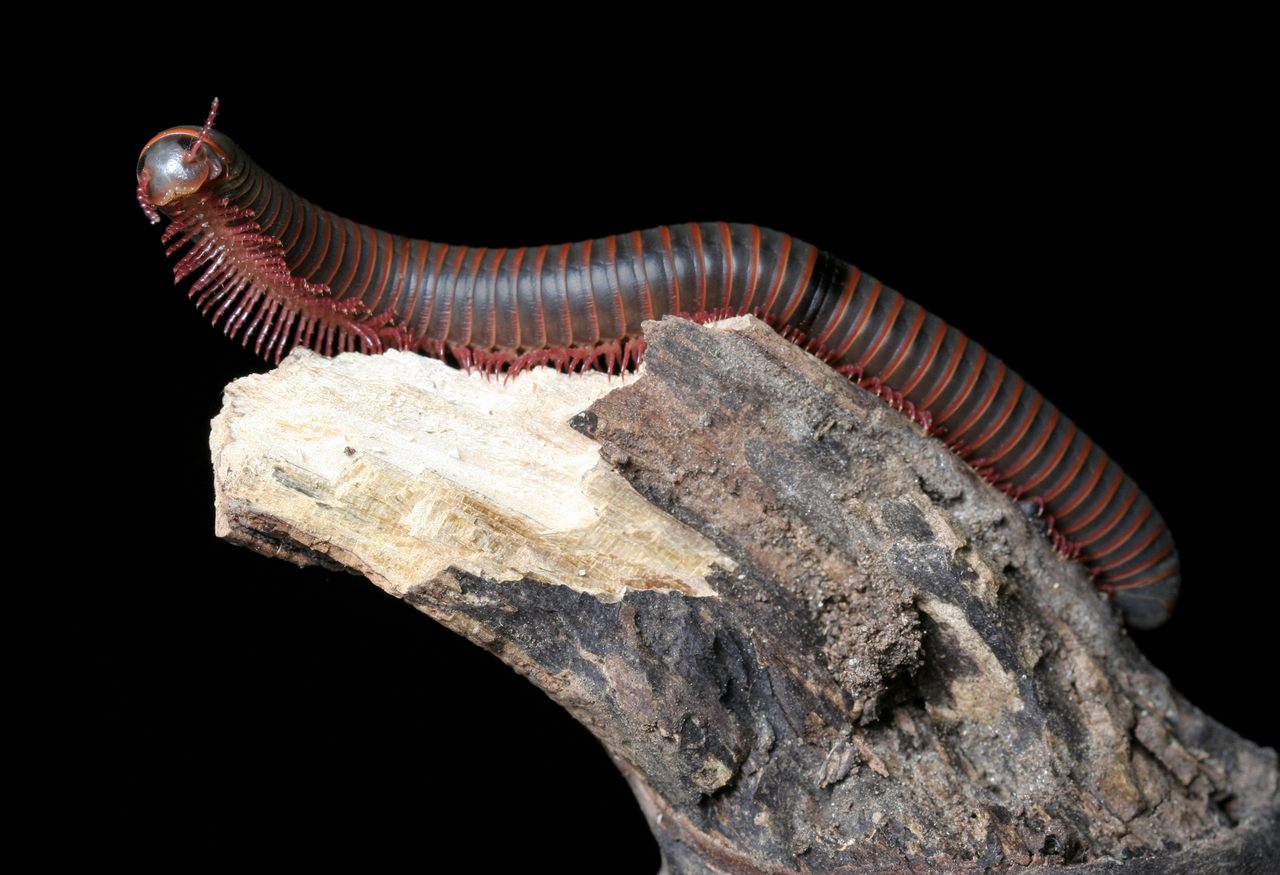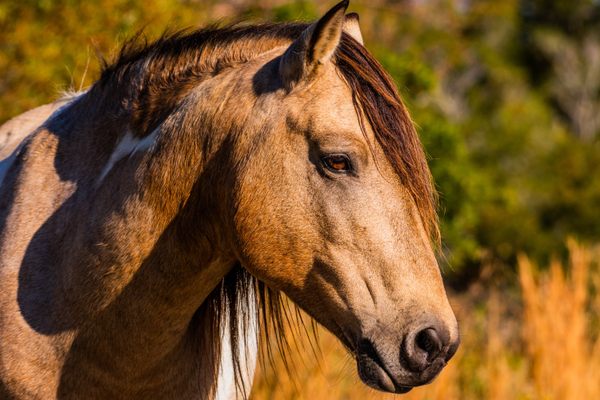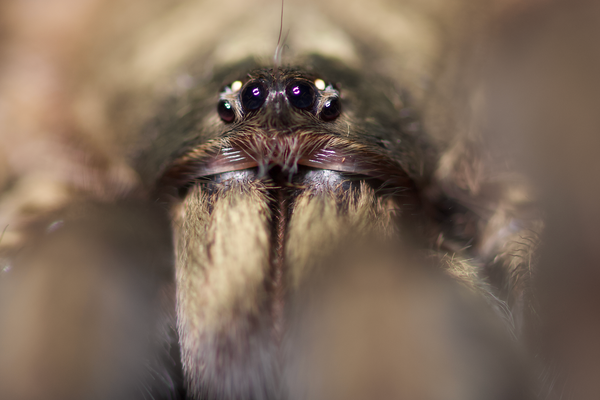The Mystery of the Headless Millipedes
Every summer, hundreds of millipedes are murdered on one small Massachusetts island.
The beheadings begin each year around the end of May.
At first, the bodies are easy to overlook. But as summer progresses on Tuckernuck Island off the coast of Nantucket, Massachusetts, more and more victims turn up. Their mangled corpses litter the roads and driveways. Despite their headless state, these victims are easy to identify. They are Narceus americanus, the American giant millipede. And no one knows what is killing them.
For decades, scientists have tried to find the answer to the question of why the headless millipedes turn up by the hundreds every summer on Tuckernuck. This phenomenon, on this scale, happens nowhere else on Earth. Identifying the culprit has implications beyond this small, sandy island: whatever animal is ultimately responsible, the answer may reveal a brand-new behavior, changing the way scientists understand its ability to adapt to new environments.

The motive of the Tuckernuck beheadings is less of a mystery than the perpetrator: millipedes are a clear and abundant source of food. Eating them safely, however, is difficult. Most of a millipede’s body is packed with poison glands—except for their head and first five body segments. Whatever predator is performing the beheadings has likely figured out how to selectively eat the safe parts of the millipedes.
Animals decapitating millipedes are not exclusive to Tuckernuck Island. Various species of these arthropods are found on every continent except Antarctica, and a variety of animals—dung beetles, Florida scrub-jays, glowworm beetle larvae—have figured out that millipede heads are a nutritious, poison-free meal. What’s unique about the Tuckernuck beheadings is how abundant they are: a brief morning’s survey could easily turn up a dozen decapitated bodies. The corpses are so common that even non-biologist residents on the island take notice; Tuckernuckers have reported the beheadings dating back to the 1940s. “People are always like ‘Oh, have you seen the millipedes? Why are they always dying on the roads?’” says entomologist Andrew McKenna-Foster.

One of the first scientists to examine the Tuckernuck millipedes was Lawrence Millman, a travel writer and mycologist who came to the island in 2004 to study its fungi. As he flipped logs and poked around the leaf litter, though, he was somewhat distracted by what he describes as “vast numbers of headless millipedes.” Millman concluded the killer had to be precise. Looking at the bodies, he noticed that the millipedes were decapitated with remarkable consistency, hardly ever missing more than the head and first five segments. He became convinced that the mystery predator is a vole.
Voles are small, burrowing rodents that are common on Tuckernuck Island. Despite being mostly herbivorous, they seemed like plausible candidates to Millman. “They are a critter that has a certain intelligence about food,” he says. “They are picky and careful.” Millman noted that other rodents like rats tend to test out new food with a single bite first. Perhaps a nibbling vole managed to discern that the front portion of the millipedes were edible.
Millman, unfortunately, didn’t have time to formally study the phenomenon. He did, however, meet McKenna-Foster, the director of the Maria Mitchell Association Natural Science Museum at the time, soon after his trip to Tuckernuck and planted the idea in his head that this mystery needed solving.
Of all the biologists that have been fascinated with the Tuckernuck millipedes, perhaps none have been as dedicated as McKenna-Foster. He originally came to the island 2006 to survey its spider populations, but like Millman was distracted by the millipedes. Inspired in part by Millman, he decided he would try to solve this mystery.

With grant funding from the Maria Mitchell Association in hand, McKenna-Foster returned to the island in 2009. He surveyed and formally described the headless millipedes. He spent days staking out a handful of millipede-covered roads, waiting for the predator to make an appearance. He even set up a camera to film the millipedes. He got close to the killer: one of the millipedes he found had a bite wound on the back of its neck, clearly the result of a brush with the mystery decapitator, but despite his best efforts, he was unable to find the culprit. He does, however, have a possible suspect, a species he often saw feeding on the roads: a sparrow known as the eastern towhee.
Towhees are abundant on Tuckernuck Island, with at least 175 of these birds spending the summer there. “People call it the towhee capital of the world,” said Skylar Kardell, an environmental sciences student at Connecticut College. They are omnivores too, readily eating both seeds and insects when the opportunities are available. Maybe this predator learned how to feed on the abundant millipedes, and the knowledge spread.
Eventually, McKenna-Foster moved to Oregon and had to abandon his quest before he could find definitive proof as to whether or not towhees were behind the beheadings. He had succeeded however, in convincing his friend Kardell to take up the mantle. “I think it haunted him,” said Kardell. “It was like his white whale.” Kardell spent the summers of 2020 and 2021 as the Tuckernuck Land Trust coastal steward and returned again in 2022 with his friend Lily Morello, a fellow birder and researcher, to study the chickadee population on the island. The whole time, he kept his eyes out for any signs of the mystery millipede predator.
Then, on the last day of their study, Kardell was in the loft of the Tuckernuck Land Trust field station when he spotted a black bird called a common grackle picking at the ground in a strange way. His mind started racing. “I immediately yelled down to Lily ‘Lily get on this! The grackle is doing something really weird!’” Kardell remembers. Morello got out her camera and started firing off photos. Then, the grackle flew away, and the pair went to see what it was picking at. “And sure enough, there was three-fourths of the millipede there, still wriggling on the ground,” says Kardell.

Kardell and Morello were elated. For a moment, they felt satisfied they had solved the millipede mystery. But they soon realized their finding had a problem.
Common grackles are not common on Tuckernuck Island, especially not in the scrubby forests where the millipedes are most abundant. It is hard to imagine such an uncommon bird could decapitate the sheer volume of dead millipedes seen each season. It is possible, said Kardell, that this grackle had simply been playing with a recently decapitated millipede that some other predator had attacked. Ultimately, the grackle observation is an important piece of the millipede puzzle, but not a complete solution.
Other candidates exist, too. Millipede biologist Jackson Means at the Virginia Museum of Natural History suggested the culprit may be glowworm beetle larvae, which attack millipedes by biting their necks, then decapitate them before eating their insides. Other birds, such as jays, or mammals, such as shrews, could be responsible as well.
“It shouldn’t be a mystery,” Kardell said. “There’s so many people who have gone to Tuckernuck just to figure this out, and nobody’s come back with any hard evidence.” McKenna-Foster agreed that it is a “very frustrating mystery.” But, in an increasingly well-understood world, such a mystery is a special thing. “There’s a lot to discover,” McKenna-Foster said. “Even somewhere as human-dominated as New England.”





























Follow us on Twitter to get the latest on the world's hidden wonders.
Like us on Facebook to get the latest on the world's hidden wonders.
Follow us on Twitter Like us on Facebook